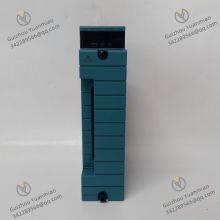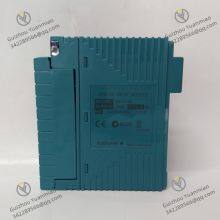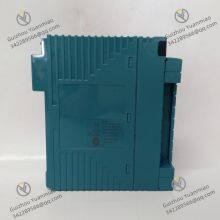Material
Other, Global universal model
Condition
Other, Global universal model
Task
Other, Global universal model
Mathematical Model
Other, Global universal model
Signal
Other, Global universal model
Customized
Non-Customized
Structure
Other, Global universal model
Operating Temperature
-10°C to 60°C
Relative Humidity
5%~95% (non-condensing)
Dimensions
38mm × 100mm × 150mm
I. Overview
The YOKOGAWA NFAI143-H00 is a multi-channel analog input module, with its core positioning as an "industrial process analog signal acquisition hub - high-precision data conversion unit - CENTUM CS 3000 system signal interaction interface". Its core function is to achieve accurate acquisition and conversion of continuous signals such as temperature, pressure, flow, and liquid level in industrial process control scenarios including petrochemicals, electric power, and chemical engineering. Through hardware-level signal conditioning, anti-interference design, and redundancy adaptation, it converts weak analog signals (such as 4-20mA and RTD resistance signals) output by on-site sensors into digital signals recognizable by the DCS (Distributed Control System), providing highly reliable data support for process control logic operations, parameter monitoring, and safety interlocking.
As a key I/O component of the CENTUM CS 3000 system, this module has core advantages of "high-precision acquisition - multi-signal compatibility - harsh environment resistance": it adopts a 16-bit high-precision ADC chip, with an analog acquisition accuracy of ±0.05% Full Scale Range (FSR); it supports multiple types of input signals including current, voltage, and resistance, and is compatible with mainstream RTD sensors such as Pt100 and Cu50; its industrial-grade hardware design can withstand a wide temperature range of -10°C to 60°C, strong electromagnetic interference, and vibration; it is deeply adapted to the FCS (Field Control System) architecture of the CENTUM CS 3000 system, supporting redundant configuration and online hot swapping. Widely used in high-precision control scenarios such as large-scale petrochemical integrated units, thermal power plant boiler control, and chemical reactor monitoring, it is a key component ensuring "stable operation and accurate regulation" of industrial processes.

II. Technical Parameters
1. Basic Specifications
2. Core Performance Parameters
Analog Input (AI) Characteristics
System Collaboration Characteristics

III. Functional Features
1. High-Precision Multi-Type Signal Acquisition to Meet Complex Process Monitoring Needs
The core advantage of the NFAI143-H00 lies in its high-precision acquisition capability for multiple types of analog signals, solving the pain points of "parallel monitoring of multiple parameters and insufficient signal accuracy" in industrial processes. In the catalytic cracking unit of a large petrochemical plant, the module collects 4 types of key signals simultaneously through 8 channels: 2 channels of 4-20mA pressure signals (reactor pressure 0-10MPa), 2 channels of 1-5V flow signals (raw material feed rate 0-50m³/h), 2 channels of Pt100 temperature signals (reactor bed temperature 0-500°C), and 2 channels of Cu50 temperature signals (pipeline temperature 0-100°C). The 16-bit ADC conversion accuracy ensures a pressure measurement error of ≤ ±0.005MPa and a temperature error of ≤ ±0.5°C, providing reliable data for the accurate regulation of the catalytic cracking reaction and avoiding product quality fluctuations caused by parameter deviations.
2. Strong Anti-Interference Design to Ensure Stable Operation in Harsh Environments
In response to complex working conditions such as strong electromagnetic interference and power fluctuations in industrial sites, the module adopts a multi-level anti-interference and protection design to ensure stable signal acquisition. In the boiler control system of a thermal power plant, where there are strong interference sources such as high-voltage motors and frequency converters, the module uses dual protection of "grouped electrical isolation + hardware filtering": each group of 4 channels has independent isolation (250V AC) to block interference transmission between different signals; hardware low-pass filtering (5Hz) filters out high-frequency noise generated by frequency converters (such as interference signals above 1kHz), avoiding false fluctuations in pressure and liquid level signals. At the same time, the TVS transient voltage suppressor at the input port can withstand ±4kV surge impacts, protecting the module from damage during thunderstorms or sudden power voltage rises, with a signal acquisition accuracy of 99.99%.
3. Deep Adaptation to the CENTUM CS 3000 System to Simplify Integration and Maintenance
As a dedicated module for the YOKOGAWA CENTUM CS 3000 system, the NFAI143-H00 can achieve "plug-and-play" integration with the system, significantly reducing commissioning and maintenance costs. In the integrated unit of a chemical industrial park, after the module is connected to the DCS rack, channel configuration (such as setting channels 1-4 as 4-20mA current signals) can be completed via the Engineer's Assistant configuration software without additional driver installation; it supports online hot swapping, allowing maintenance personnel to replace faulty modules (e.g., in case of channel failure) without interrupting system operation. After module replacement, configuration parameters are automatically synchronized, with a recovery time of ≤ 5 minutes, improving maintenance efficiency by 80% compared with traditional non-dedicated modules. In addition, the module supports redundant configuration, where the main and standby modules synchronize acquisition data in real time. When the main module fails, the standby module takes over automatically within 100ms, ensuring uninterrupted process monitoring.
4. Intelligent Fault Diagnosis to Shorten Fault Handling Time
The module has a built-in channel-level fault diagnosis function, which can monitor its own status and external sensor links in real time to quickly locate fault points. In the monitoring of pharmaceutical and chemical reactors, if the cable of a Pt100 temperature sensor is broken, the module immediately detects the "Channel 3 RTD Disconnection Fault" and pops up alarm information (including fault channel and fault type) through the DCS operator station. Maintenance personnel do not need to check all 8 channels one by one and can directly replace the sensor cable, shortening the average fault handling time to less than 15 minutes. At the same time, the module can monitor the accuracy drift of the ADC chip (e.g., accuracy exceeding the limit after long-term operation) and issue an "calibration warning" in advance, avoiding control deviations caused by reduced accuracy and ensuring compliance with pharmaceutical production processes (meeting GMP requirements).
5. Wide-Temperature and Protection Design for Multi-Scenario Adaptation
The module adopts industrial-grade hardware selection and enhanced protection, enabling stable operation in various industrial environments. In outdoor chemical installations in northern winter (-8°C) or high-temperature workshops in southern summer (55°C), the wide-temperature design of -10°C to 60°C ensures the module operates normally without additional temperature control equipment; the moisture-proof and anti-corrosion coating on the PCB board can resist high humidity (95% RH) and salt spray environments in coastal areas, with a service life of more than 10 years; the housing's flame retardant rating of UL94 V-0 can delay combustion in case of cabinet fire hazards, buying time for personnel evacuation and emergency equipment handling, and complying with industrial safety standards.

IV. Operation, Maintenance and Troubleshooting
Daily Maintenance Points
Status Monitoring: Check the status of each channel of the module through the CENTUM CS 3000 operator station daily to confirm that the collected values are consistent with the on-site sensor display (e.g., a pressure of 5MPa corresponds to a module collected value of 5.000±0.005MPa) and that there are no fault alarms; check the module indicator lights (power light on steadily green, running light flashing green, fault light off red) to ensure normal operation.
Wiring and Isolation Inspection: Check the input terminal wiring monthly, re-tighten the screws (torque 0.2-0.3N·m) to avoid poor contact caused by vibration; measure the grouped isolation resistance (should be ≥ 100MΩ) to verify isolation performance; for RTD sensors, check whether the three-wire wiring is correct (to avoid temperature measurement deviations caused by incorrect wiring).
Accuracy Calibration: Calibrate key channels (such as reactor temperature and pressure control channels) every six months. Use a standard signal source (such as the YOKOGAWA CA700 calibrator) to input 0%, 25%, 50%, 75%, and 100% FSR signals, check whether the module's collection error is ≤ ±0.05% FSR, and correct the calibration parameters online via configuration software if the error exceeds the limit (no need to disassemble the module).
Environment and Cleaning: Clean the dust on the module surface monthly (blow along the heat dissipation direction with compressed air to avoid poor heat dissipation caused by dust accumulation); check the installation environment temperature (measure the module surface temperature with an infrared thermometer, which should be<55°C) and humidity (avoid condensation); strengthen cabinet ventilation or add dehumidification equipment in high-temperature and high-humidity scenarios.
Common Faults and Solutions
V. Application Scenarios
Monitoring of Catalytic Cracking Units in Petrochemical Plants: In a 1 million ton/year catalytic cracking unit, the NFAI143-H00 module collects 8 signals including reactor pressure (4-20mA corresponding to 0-10MPa), regenerator temperature (Pt100 corresponding to 0-700°C), and raw material feed flow (0-20mA corresponding to 0-100m³/h). Through the CENTUM CS 3000 system, it achieves precise monitoring of pressure ±0.01MPa and temperature ±1°C, providing data support for adjusting the catalyst injection amount and ensuring stable cracking reaction efficiency and product yield.
Boiler Water Level Control in Thermal Power Plants: In the boiler system of a 600MW thermal power unit, the module collects drum water level (differential pressure transmitter 4-20mA corresponding to 0-5m), feedwater temperature (Pt100 corresponding to 0-300°C), and furnace pressure (1-5V corresponding to -500-500Pa) signals. Cooperating with the DCS control logic, it maintains stable drum water level (±0.05m) by adjusting the feedwater pump speed, avoiding boiler water shortage or overflow accidents.
Temperature Monitoring of Reactors in Pharmaceutical and Chemical Industries: In an antibiotic production reactor, the module collects temperatures in different areas of the reactor (0-150°C) through 4 Pt100 channels with an accuracy of ±0.1°C, meeting the strict GMP requirements for temperature control. When the temperature of a certain channel exceeds the limit, the DCS system triggers the cooling system interlock based on the module's collected data, ensuring the reaction temperature is stable within the process range (e.g., 37±0.5°C) and guaranteeing the uniformity of drug quality.
Pressure Monitoring of Long-Distance Natural Gas Pipelines: In the station of a long-distance natural gas pipeline, the module collects pipeline pressure (4-20mA corresponding to 0-10MPa) and pipeline transportation temperature (Cu50 corresponding to -20-80°C) signals, and the data is uploaded to the dispatching center via the CENTUM CS 3000 system. The module's anti-interference design can resist electromagnetic interference from frequency converters and high-voltage equipment in the station, ensuring stable pressure data and providing a reliable basis for pipeline pressure adjustment and leakage early warning.














































